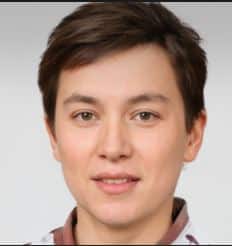Kjell Brutscheidt is not just any individual; he represents a profound journey characterized by resilience, courage. This article delves deep into the unique aspects of Kjell Brutscheidt eye condition, its diagnosis, treatment options, and the influence it has had on his life.
We also explore interviews, insights from medical professionals, and the broader context of similar conditions.
What Happened to Kjell Brutscheidt Eye?
Kjell Brutscheidt suffers from a rare eye condition known as congenital nystagmus, which is characterized by involuntary and uncontrolled eye movements.
These movements can often result in difficulties with vision and can affect depth perception and clarity. The complexity of this condition reveals a range of experiences and coping strategies that Kjell has developed over the years.
What is Congenital Nystagmus?
Congenital nystagmus typically presents at birth or in the first few months of life. Unlike acquired nystagmus, which occurs due to injury or health issues later in life, congenital nystagmus is often linked to genetic factors. Essentially, the eyes oscillate uncontrollably, resulting in several visual impairments.

Symptoms of Congenital Nystagmus
- Involuntary Eye Movements: Often described as a “wobbling” effect where the eyes appear to move back and forth.
- Reduced Visual Acuity: Many individuals report difficulty seeing clearly, particularly at a distance.
- Sensitivity to Light: Increased light sensitivity can further complicate everyday activities.
- Balance Issues: The lack of steady vision can lead to difficulties in spatial awareness.
The Impact of Kjell’s Eye Condition on Daily Life
Kjell’s journey through life with congenital nystagmus has been marked by both challenges and triumphs. He has had to navigate a world where visual cues can often become blurred. This struggle has shaped his perspectives and life choices, influencing his career, relationships, and hobbies.
Academic and Professional Challenges
Pursuing education and a professional career can be especially taxing for individuals with congenital nystagmus:
- Reading Difficulty: Kjell has often resorted to audiobooks and digital devices with text-to-speech features to accommodate his reading challenges.
- Attendance at Lectures and Meetings: Certain visual tasks can become exhausting, often requiring Kjell to prepare extensively or take frequent breaks.
Despite these obstacles, Kjell has shown exceptional resilience and has managed to achieve commendable success in his career.
Coping Mechanisms and Adaptive Strategies
Kjell has continuously sought solutions to manage his condition:
- Use of Assistive Technology: Digital magnifiers and voice recognition software have played significant roles in his day-to-day activities.
- Environmental Modifications: Changing lighting conditions and minimizing glare have proven helpful in enhancing his surroundings for better visibility.
- Regular Eye Check-ups: Frequent consultations with ophthalmologists help monitor the progression of his condition, allowing him to adapt.
Treatment Options for Congenital Nystagmus
While there is no cure for congenital nystagmus, several treatment options can help manage the symptoms. Each of these options comes with varying degrees of efficacy.
Conventional Treatments
- Eyeglasses: Special glasses with tinted lenses to reduce light sensitivity can improve comfort.
- Contact Lenses: Some patients find that contacts provide better vision than traditional glasses.
- Medication: Some medications, although limited, can help reduce symptoms in certain cases.
Advanced Interventions
- Surgical Options: Surgery may be recommended in extreme cases to reposition the eye muscles. It’s important to note that the success rate varies among individuals.
Table 1: Overview of Treatment Options for Congenital Nystagmus
| Treatment Option | Description | Efficacy |
|---|---|---|
| Eyeglasses | Specialized lenses to mitigate light sensitivity | Variable, dependent on individual |
| Contact Lenses | Customized lenses that may enhance vision | Often better than glasses |
| Medication | Drugs to minimize symptoms | Limited effectiveness |
| Surgery | Reshaping eye muscles to stabilize movements | Variable success rates |
Support Systems for Kjell
Beyond medical treatment, support from family, friends, and community resources has been vital to Kjell’s journey. Emotional and practical support can significantly bolster confidence and independence.
Advocacy and Awareness
Kjell has dedicated himself to raising awareness about congenital nystagmus through personal testimony and public speaking. Advocacy serves two primary purposes:
- Educating the Public: Sharing information about eye conditions helps desensitize myths and stereotypes.
- Encouraging Research: Advocacy helps drive funding and attention towards research initiatives in rare medical conditions.
The Role of Community in Kjell’s Journey
Kjell’s experience underscores the importance of community:
- Support Groups: Joining support groups, both online and in-person, facilitates connection with others experiencing similar challenges, fostering a sense of belonging.
- Peer Support: Reaching out to others with nystagmus has proven beneficial for both emotional support and sharing practical coping strategies.
Quotes from Kjell
Kjell often articulates his experiences eloquently. One of his notable quotes remains:
“It’s about adaptability; life doesn’t pause for my condition, and neither will I.”
This perspective motivates many who face similar challenges, encouraging them to embrace their unique journeys.
The Science Behind Congenital Nystagmus
Diving deeper into the medical aspects, congenital nystagmus is often linked to various genetic conditions. Understanding the underlying science aids in grasping how these conditions manifest.
Causes of Congenital Nystagmus
The primary causes of congenital nystagmus can be attributed to genetic mutations that affect the pathways involved in vision. Some of the most common conditions associated with congenital nystagmus include:
- Albinism: A genetic condition resulting in a lack of pigment in the skin and eyes, often causing vision problems.
- Achromatopsia: A genetic vision disorder characterized by an inability to perceive color, leading to associated eye movement issues.
- Cataracts: In some instances, congenital nystagmus may arise as a secondary consequence of cataracts present at birth.
Diagnosis of Congenital Nystagmus
Early diagnosis typically begins with a comprehensive pediatric eye exam. The process often includes various tests, such as visual acuity assessments and eye movement evaluations. Additionally, genetic testing is becoming increasingly important in understanding the condition’s origins, which can also guide potential treatments.
The Future of Treatment and Research
As we look towards the future, advancements in medical technology and research offer hope for individuals like Kjell.
Innovations in Treatment
- Gene Therapy: Researchers are exploring the potential of gene therapy to correct specific genetic mutations that cause congenital nystagmus.
- Neuroprosthetics: Emerging technologies aim to develop devices that may assist in improving vision through advanced algorithms that process visual information.
Importance of Research
Investing in research for rare eye conditions is paramount. Continued efforts aim to:
- Unravel genetic factors contributing to congenital nystagmus.
- Develop better treatment protocols to improve quality of life for those affected.
- Foster understanding among healthcare professionals regarding unique challenges.
Kjell Brutscheidt’s journey exemplifies resilience, courage, and the power of community. Through advocacy, support, and a commitment to adaptability, he continues to inspire many facing similar conditions. As research advances and awareness grows, there is hope for a fuller understanding of congenital nystagmus and a brighter future for those it affects.
Conclusion
Kjell’s unique journey underscores the intricate relationship between medical conditions and personal resilience. His experience with congenital nystagmus serves as a reminder of the importance of understanding, advocacy, and the sheer strength of the human spirit in overcoming life’s challenges. Whether through innovative treatments or strong community support, there is always hope and light on the horizon for those navigating the complexities of living with an eye condition.

Mark Joseph is a professional writer at Style Magazine US and has experience of more than 5 years in writing news and style articles.

